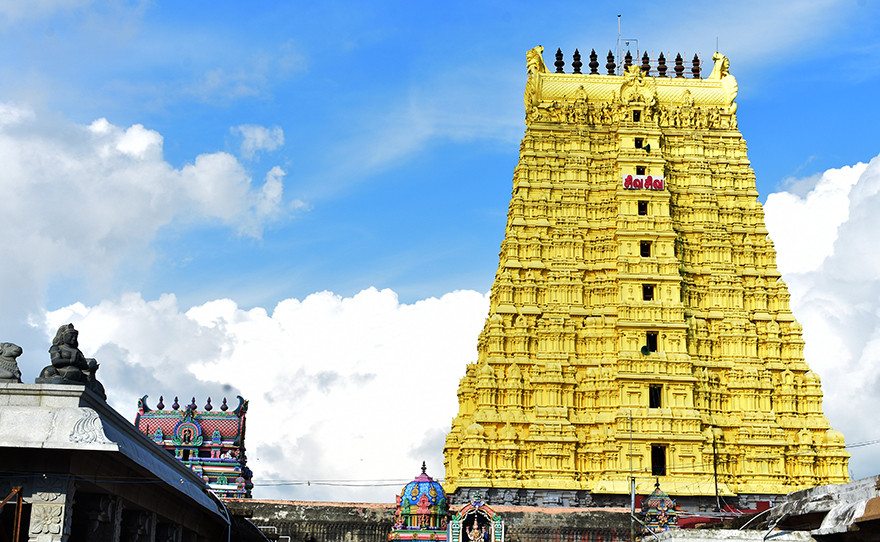Ramanathaswamy Temple
Location: Rameswaram
State:Tamil Nadu
Ramanathaswamy Temple (Rāmanātasvāmi Kōyil) is a Hindu temple dedicated to the Hindu god Shiva located on Rameswaram island in the state of Tamil Nadu, India. It is also one of the twelve Jyotirlinga temples. It is one of the 275 Paadal Petra Sthalams, where Nayanars (Saivite saints), Appar, Sundarar and Tirugnana Sambandar, have glorified the temple with their songs. The temple was expanded during the 12th century by the Pandya Dynasty, and its principal shrine’s sanctum was renovated by Jeyaveera Cinkaiariyan and his successor Gunaveera Cinkaiariyan, monarchs of the Jaffna kingdom. The temple has the longest corridor among all Hindu temples in India. It was built by King Muthuramalinga Sethupathiy.The temple, located in Rameswaram, is considered a holy pilgrimage site for Shaivites, Vaishnavites and Smarthas. Mythological accounts depict the presiding deity, the Lingam of Ramanathaswamy (Shiva), as having been established and worshiped by Rama, before he crossed his bridge to the present-day island of Sri Lanka. It is one of the Char Dham pilgrimage sites.

Rama, the seventh avatar of the god Vishnu, prayed to Shiva here to absolve any sins that he might have committed during his war against the demon-king Ravana in Sri Lanka, who was a brahmin. According to the Puranas[which?] (Hindu scriptures), upon the advice of sages, Rama along with his wife Sita and his brother Lakshmana, installed and worshipped the lingam[citation needed](an iconic symbol of Shiva) here to expiate the sin of Brahmahatya incurred while killing Ravana (who was a Brahmin and son of Vishrava). To worship Shiva, Rama directed his trusted lieutenant Hanuman (avatar of Shiva himself) to bring it from Himalayas. Since it took longer to bring the lingam, Sita built a lingam made of sand from the nearby seashore, which is also believed to be the one in the sanctum of the temple. This account is well supported by the original Ramayana authored by Valmiki where it is written in Yudha Kanda.According to another version, as quoted in Adhyatma Ramayana, Rama installed the lingam before the construction of the bridge to Lanka. This version also finds reference in Valmiki Ramayana, where Sri Rama on his way back to Ayodhya, shows an Island to Sita from the Pushpaka Vimana, saying he received grace of MahaDeva at that place.
